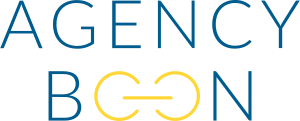According to Donald Miller, the founder of StoryBrand, there is a connection between great writing, marketing, and infomercials. In all three, you have to convince someone of something. In marketing, you want to convince your target audience to buy your product or service. In order to do that you have to know how to write a compelling call to action and use all your other marketing copy to convince people to take that call to action.
What is a call to action?
A call to action, or CTA, is a short phrase that tells a potential customer what to do next. It offers a clear path for potential clients so they know exactly how to purchase what you have to offer.
No matter how great your website looks, or how amazing your product is, if you don’t overtly tell people how to move forward and buy your offering, they won’t. You need a clear and compelling call to action so that you can convert website visitors into happy customers.
9 Tips to Write a Compelling Call to Action
Around 70% of small businesses have websites with no CTA at all. That means roughly 70% of small businesses are missing out on sales because they aren’t telling people how to buy. They are essentially hiding the cash register from prospective customers.
Thankfully, there is a pretty simple solution to this problem. Follow these tips to write a clear call to action for your business.
Tip 1: Start with an action word.
In order to get people to take your desired action, you have to use a strong command verb, or an action verb, to tell them exactly what you want them to do. Here are a few examples of great CTA power words:
- Buy
- Try
- Subscribe
- Schedule
- Reserve
- Discover
- Sign Up
- Join
- Enroll
- Get
- Save
- Find
- Shop
- Download
- Start
Tip 2: Be clear, not cute.
Donald Miller repeatedly reminds small business owners to be clear, not cute when creating marketing messaging. Although it is fun to come up with witty, unique phrases, if no one understands what you mean, or in this case precisely what you want them to do, you’ve wasted your time and brain power thinking up a creative CTA.
Always prioritize clarity over cute and creative. A simple call to action will lead to better conversion rates than a cute call to action that no one understands.
Tip 3: Keep it short.
The best calls to action are clear and concise. We recommend keeping the text on your call to action button to 2-5 words.
Remember, all the other text on your website and marketing materials should direct visitors to your call to action. The CTA button itself is not in charge of the convincing – the rest of your marketing copy is. The call to action button solely tells people what action to take.
Tip 4: Use Urgency
Adding urgency to your call to action is an effective way to increase conversions. Urgency creates an emotional response that compels people to act. You can create urgency by adding words like “now” and “today” to your CTA phrase.

Tip 5: Make your CTA easy to find (and complete).
You want your call to action to be above the fold on your website (at the very top before you have to scroll to see more) so that website visitors know within seven seconds what you do and how they can work with you.
You also want to repeat your CTA throughout your website copy and in all your marketing materials. No one should ever be left wanting to buy your offering but not sure how. You want the next step, your call to action, to be incredibly obvious.
You also want to keep your call to action simple to complete. If there are too many required steps, your potential customers may get distracted or frustrated and change their minds.
Tip 6: Repeat, repeat, repeat.
The brain needs to see something about eight times before it processes and registers the information. That means if your CTA is just hidden in a corner somewhere on your landing page, very few people are going to take that action, or even notice that it is there.
You need to place your call to action all over your website, in at least every third section on your main landing page, so that whenever people decide your product is the one for them, they know exactly how to move forward.
You should also include your CTA within your social media posts, blog posts, in your profile on social media platforms, and in all your other content marketing. You want your compelling CTA to be literally everywhere you are. The more often you remind people what next step to take, the more likely you are to get the desired outcome- increased conversions.
Tip 7: Be consistent.
Choose one main CTA and use the same text and formatting on all your call-to-action buttons.
Although you may be tempted to write “learn more” under one section of your website, “join today” in another, and “buy now” at the very end, you are confusing your potential customer.
Even if all three buttons lead to the same purchasing page, your ideal client is left trying to decide which button to click. Don’t make them waste time and energy choosing the right button. Keep all of your CTA buttons the same.
Transitional CTAs
The only button on your website that should look different from your main CTA is your transitional call to action, or secondary call to action, that directs people who aren’t quite ready to buy your product to sign up for your lead generator.
You also want your secondary CTA to be easy to find, clear and consistent. Many websites use a CTA pop-up that appears as your target audience is clicking away from a page. Businesses also include their transitional call to action at the end of a landing page, blog post, or within their social media posts. A secondary call to action helps you get people who aren’t ready to buy yet into your sales funnel so you can continue fostering the relationship with them.
Tip 8: Don’t be afraid to experiment.
In Donald Miller’s interview with Jonathan Davis, a master in infomercial creation, both mention that they regularly use A/B testing to constantly improve their calls to action.
If the experts are experimenting, you should too! Experimenting with different calls to action will help you determine the call to action that works best for your business. Trying out different verbiage, buttons, and placement can help you figure out what combination encourages the most people to take the next step and buy your product or service.
Tip 9: Use convincing copy to support your CTA.
Your call to action button tells people what to do. Everything you write in your emails, website, and other marketing copy should be geared toward helping prospective customers decide whether or not your product or service is the one for them.
Here are some copywriting tips that will compel the right people to take your call to action and buy your offering:
Position your customer as the hero.
When you’re writing your marketing materials, it’s important to position your customer as the hero and your business as the guide.
By doing so, you tell a story focused on how your product will help your ideal client survive and thrive. You are highlighting how they will benefit from working with you instead of just focusing on the features of your product.
This helps an ideal client see themselves in the story of success you are inviting them into.
Describe the benefits and the stakes.
When describing your product, you not only want to show how it will make your ideal client’s life better, but you also want to show them what is at stake. Outline what happens if they don’t do business with you.
Keep in mind that you should talk about the stakes sparingly. If overused, they can feel like a scare tactic and turn people away. Your goal is to provoke emotion and compel people to take action. However, provoking fear and using under the gun type tactics aren’t effective.
Donald Miller compares this to the salt and flour in a bread recipe. The benefits are your flour and the stakes are the salt. You want to fill your marketing materials with benefits but it is also necessary to mention the stakes so that they know why they need your help. Both ingredients are necessary, and work together to make delicious bread, but they aren’t needed in equal amounts.
Use urgency as needed.
Urgency is effective but just like with mentioning what is at stake, you don’t want to overuse it. If your messaging constantly tells people they are going to miss out on something, they will eventually start tuning you out.
You can tastefully use urgency by:
- Offering a bonus for new subscribers
- Using countdown clocks for sales
- Running short-term sales
A well-written, effective call to action is a simple change that can greatly increase conversions for your business. A good CTA should be clear and concise, with a sense of urgency that encourages the reader to take action immediately. It should be easy to find and repeated throughout your website or marketing materials.
Don’t torture yourself trying to find the perfect call to action on day 1. Instead, implement the basic idea outlined in this post and then experiment until you get the results you want. Take some time today to craft a good call to action for your website or marketing campaign and then watch how this one little action phrase boosts your sales.
If you’ve already written, experimented and all but given up on your call to action, contact us today to speak with one of our StoryBrand Certified Guides. We’d love to help you polish your CTA and other business messaging so that you can watch your business grow.





